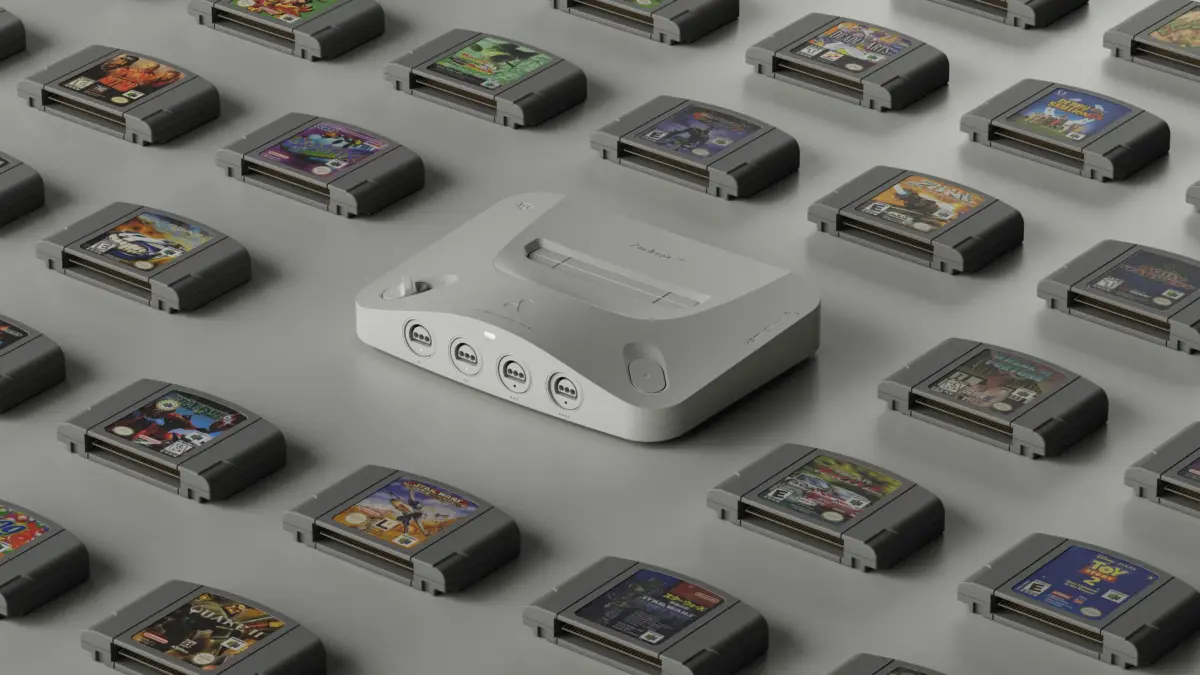The recently released Analogue 3D has been a real hit with gamers, bringing their old Nintendo 64 games and accessories to life. The new console can play physical N64 games, with 4K upscaling and CRT filters.
The Analogue 3D is perfect for nostalgia chasers and hardcore gamers, with the FPGA-based system replicating the original hardware while offering enhanced visuals and low-latency gameplay. Could the Analogue 3D’s success lead the way to more FPGA systems?
What Is the Analogue 3D?
The Analogue 3D is made by video game company Analogue, who have vast experience in making retro consoles. Analogue has created several hardware systems over the years, including Neo Geo, Super Nintendo, and Sega Genesis devices.
The Analogue 3D allows gamers to play their Nintendo 64 library on modern televisions with HDMI output. The console uses FPGA-based technology to replicate the original N64 hardware for a seamless gameplay experience.
The Analogue 3D lets you play your old Nintendo 64 games with enhanced 4K graphics. You can use CRT filters, such as scanlines, to mimic the nostalgic look of older TVs, which works mind-blowingly well. With companies like COG planning to revive even more classic PC games, retro gaming demand is only getting stronger.
The console plays original games from all regions and supports original Nintendo 64 controllers and accessories. The Analogue connects via HDMI, with USB ports and an SD card slot for firmware and possible future updates to the console. You can also overclock the device to play some games with higher performance and fidelity.
Why Advanced FPGA Technology Is Crucial for Modern Retro Consoles
FPGA stands for Field-Programmable Gate Array, and the modern technology is vital for gaming systems like the Analogue 3D. An FPGA is a circuit that can perform many digital functions. It can be configured by users and is reprogrammable, allowing for higher accuracy and lower latency.
The use of FPGAs has allowed Analogue to create a console that works perfectly with Nintendo 64 cartridges and accessories. The results are staggering compared to typical software emulation, with N64 games looking and feeling better than ever.
FPGAs allow the Analogue 3D to imitate the original Nintendo 64 console while adding enhanced features like 4K HDMI output and other modern connections. There is no emulation predicting and perfect compatibility, making the Analogue 3D the ultimate N64 console.
One department where emulation devices usually miss the mark is latency. In a world of modern gaming consoles offering up to 120 fps, gamers are getting used to zero latency, instantaneous response times, and smooth gameplay.
The FPGA processing works flawlessly when it comes to low-latency gaming. The technology mimics the original console without the lag found on various software emulations. The 4K graphics are a bonus, but instant input response could be the real winner for Analogue.
How Does the Analogue 3D Compare to Official Mini Consoles?
Various official mini consoles have hit the market in recent times, including the SNES Classic Edition, Neo Geo Mini, and the PlayStation Classic. Although some official retro consoles have been big hits, the classic mini systems are certainly limited.
First and foremost, only a handful of games are pre-installed on the device, with no official way of adding any more. Many classic games are missing, while the titles already on the device do not suit every gamer.
Although the mini designs of the consoles were generally stunning, short controller cables, no Bluetooth controller support, and limited functionality were their shortcomings.
The Analogue 3D pretty much does away with all those issues, with the newer technology making the console stand out from the crowd. Yes, the device is expensive at $269.99, but when you look at everything Analogue has to offer, the Analogue 3D is a home run.
Could We See a PS1 Version Down the Line?
With the Analogue 3D selling out almost immediately, gamers are already speculating on what could come next. Analogue has worked on numerous devices over the years, and more retro-style modern consoles could be in the pipeline.
There’s always a growing demand for nostalgic consoles, with the retro era really kicking off around a decade ago. With the technology advancing massively since the first retro systems, FPGAs are the way forward.
The Sega Saturn is a notoriously tough console to emulate, due to its unusual hardware design. Therefore, the Saturn could be perfect for FPGA technology, allowing your original Saturn cartridges to come back to life.
The Nintendo 64 was the final major console to use game cartridges before the gaming world moved on to discs. The FPGA technology can work with discs, opening a whole new world of potential disc-based retro gaming consoles.
Sony’s PlayStation Classic, which was released in 2018, was a real disappointment. The mini console received generally negative reviews from critics and gamers due to its lacklustre gaming library, poor emulation, and high price.
However, a disc-based modern console made by an experienced video game company like Analogue has the potential to be a huge hit. If the Analogue 3D is anything to go by, a PS1 version could sell like hotcakes. Imagine playing PS1 discs like Gran Turismo 2, Resident Evil 2, and Silent Hill in 4K and low latency on a modern gaming console.
